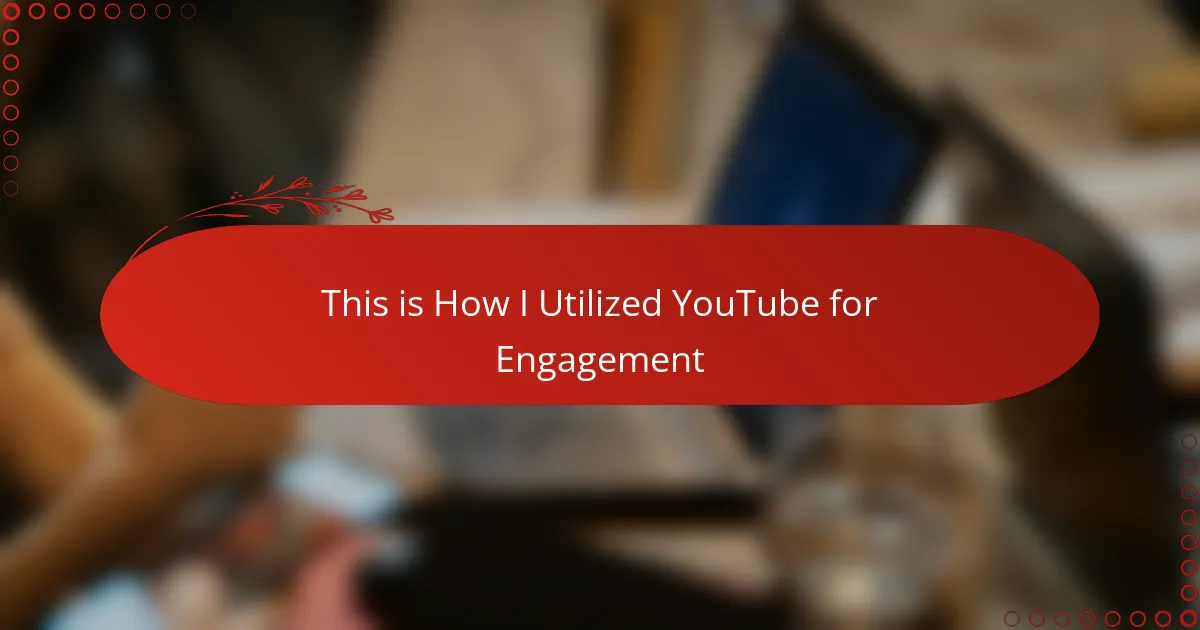Key takeaways
- Combining YouTube with radio enhances audience engagement by transforming passive listeners into active participants through interaction and real-time feedback.
- YouTube’s visual element adds authenticity and relatability, making radio hosts more accessible and fostering deeper connections with viewers.
- Creating varied and timely content, along with consistent uploads, is crucial for maintaining audience interest and sparking lively discussions.
- Utilizing YouTube Analytics provides invaluable insights into audience behavior, helping creators understand what content resonates most and enhancing overall engagement.
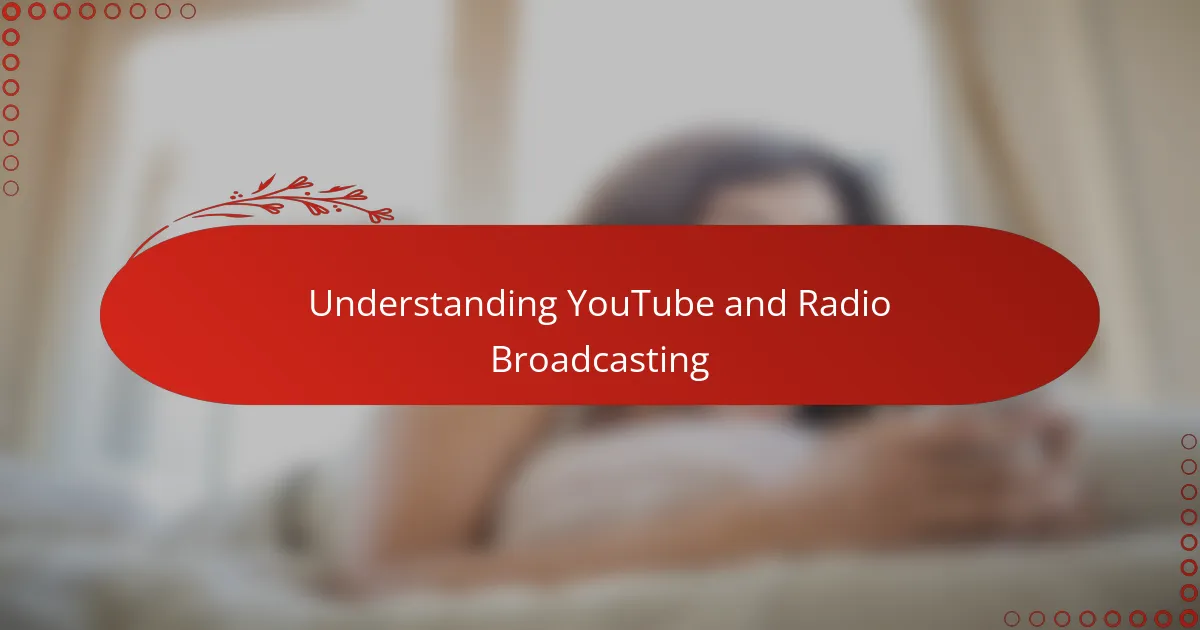
Understanding YouTube and Radio Broadcasting
When I first dove into radio broadcasting, I was mesmerized by its power to create intimate connections through sound alone. YouTube, on the other hand, added a visual layer to that connection, making it nearly impossible to ignore or scroll past. Have you ever thought about how combining these two mediums can deepen audience engagement in ways radio alone can’t?
What strikes me most is how YouTube’s platform changes the rhythm of traditional radio. Instead of just passive listening, viewers interact, comment, and share their thoughts instantly. This shift from a one-way broadcast to a dynamic conversation fascinates me—it feels like radio has been given a fresh voice in the digital world.
Reflecting on my journey, I realize that understanding both YouTube and radio broadcasting means appreciating their unique strengths and how they complement each other. YouTube brings a global, visual audience, while radio offers that familiar warmth and immediacy. It’s the blend of these elements that reshapes how stories are told and heard today.
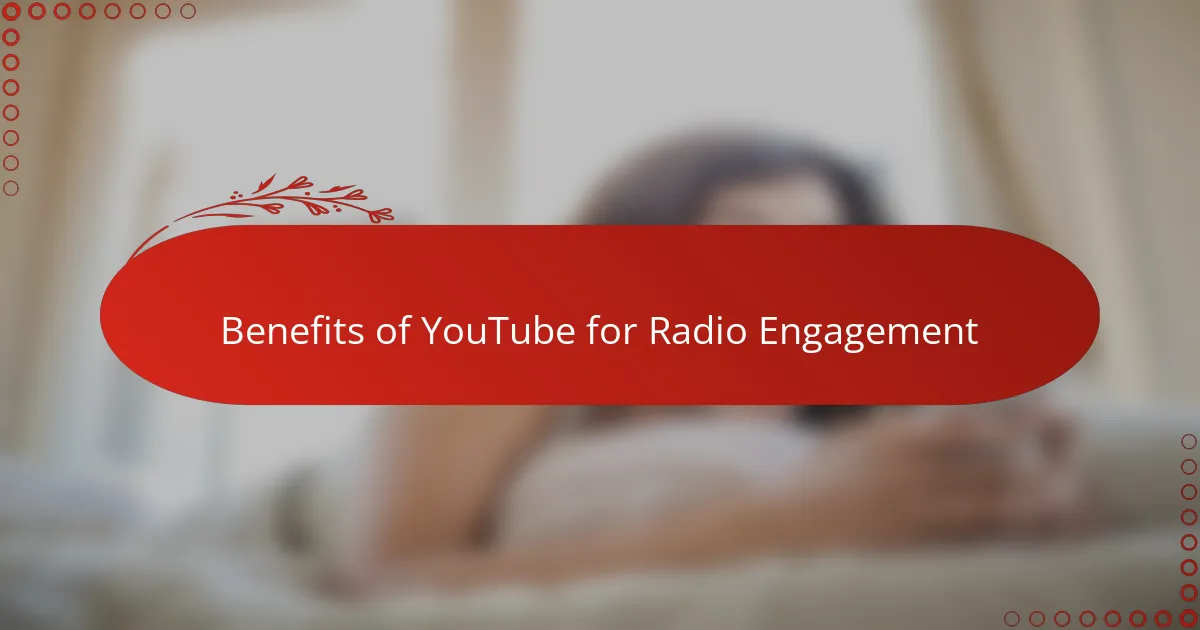
Benefits of YouTube for Radio Engagement
What I found most rewarding about using YouTube for radio engagement is how it transforms passive listeners into active participants. Suddenly, my audience wasn’t just hearing my voice—they were seeing the behind-the-scenes, reading comments, and responding in real time. Have you noticed how a simple video clip can spark thousands of conversations far beyond what a traditional radio wave ever could?
One thing that surprised me was how YouTube extended the reach of my radio content internationally. Listeners who could never tune in live started joining the conversation, sharing their own stories and perspectives. This kind of global engagement is invaluable—it made my broadcasts feel alive around the clock, not just during airtime.
Also, the visual element brought a new layer of authenticity. When I shared candid moments or live reactions, it built trust and connection in ways I didn’t expect. It made me realize that radio voices become even more relatable when people can see the person behind the microphone. Isn’t that the heart of true engagement?
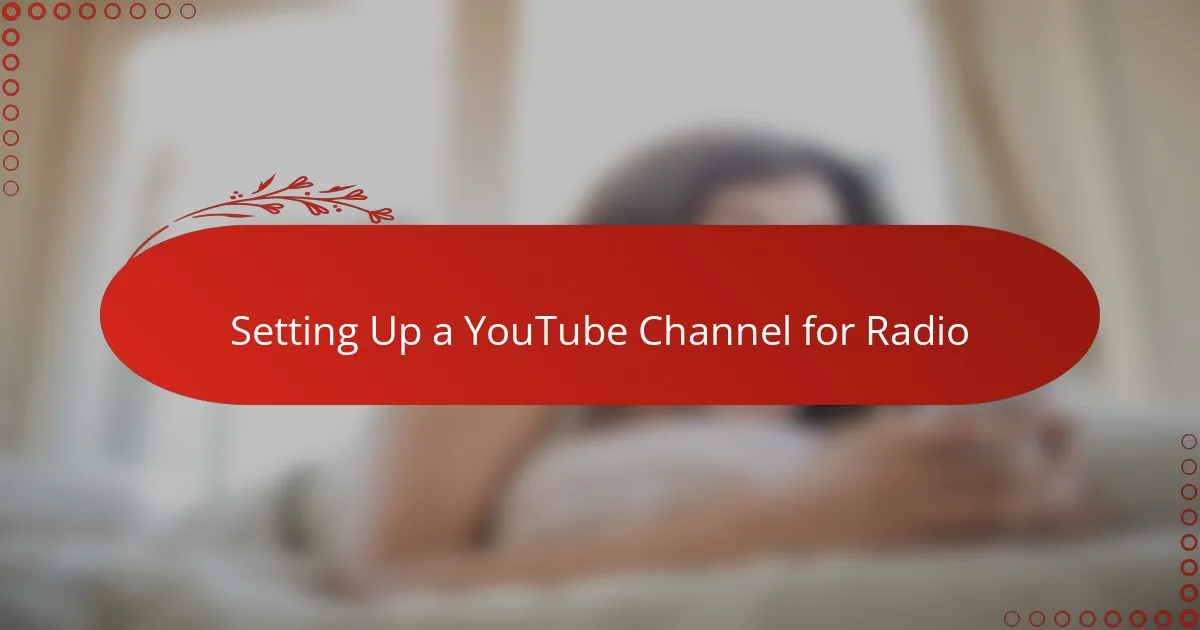
Setting Up a YouTube Channel for Radio
Setting up a YouTube channel for radio was both exciting and daunting for me. I remember the first step: choosing a channel name that felt authentic and easy to remember. It was important because the name had to reflect the essence of my radio show while being searchable and inviting on a platform brimming with content.
Next came the technical side—uploading my profile picture and banner. I realized these visuals weren’t just decoration; they set the first impression for new viewers. So, I opted for images that captured the vibe of my broadcasts—warm, approachable, and vibrant. Have you ever noticed how a great banner can make you want to explore a channel further?
Then, organizing my content into playlists felt like curating a mini radio station within YouTube itself. It helped me guide viewers through topics and themes, much like how I plan segments on air. This simple structure made my channel feel professional and made it easier for my audience to find exactly what they wanted to watch. Setting this up taught me how vital the viewer’s experience is, even before they hit ‘play.’
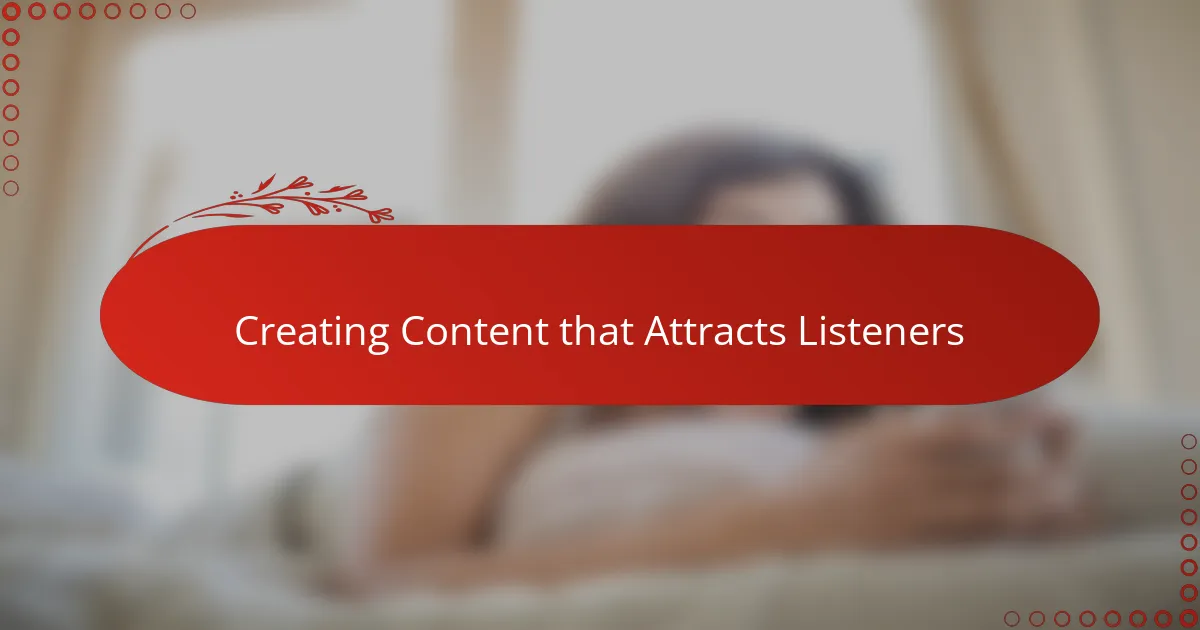
Creating Content that Attracts Listeners
When it came to creating content that truly attracts listeners, I realized that authenticity was my best tool. Instead of aiming for perfection, I focused on sharing moments that reflected the real energy and quirks of my radio show. Have you ever noticed how genuine stories and unscripted laughs pull you in more than polished scripts? That rawness makes listeners feel like they’re right there with you.
I also experimented with mixing formats—short teasers, behind-the-scenes clips, and live Q&A sessions. This variety kept my audience curious and eager for what would come next. In my experience, people love feeling included in the process, not just consuming the final product. It’s like inviting them into your studio rather than just handing them a broadcast.
One surprising discovery was how important timely and relevant topics are for engagement. When I tapped into current events or trending conversations and offered my unique perspective, my content sparked vibrant discussions. It made me wonder: wouldn’t listeners connect more deeply if radio content adapted as quickly as social media? From what I’ve seen, the answer is a resounding yes.
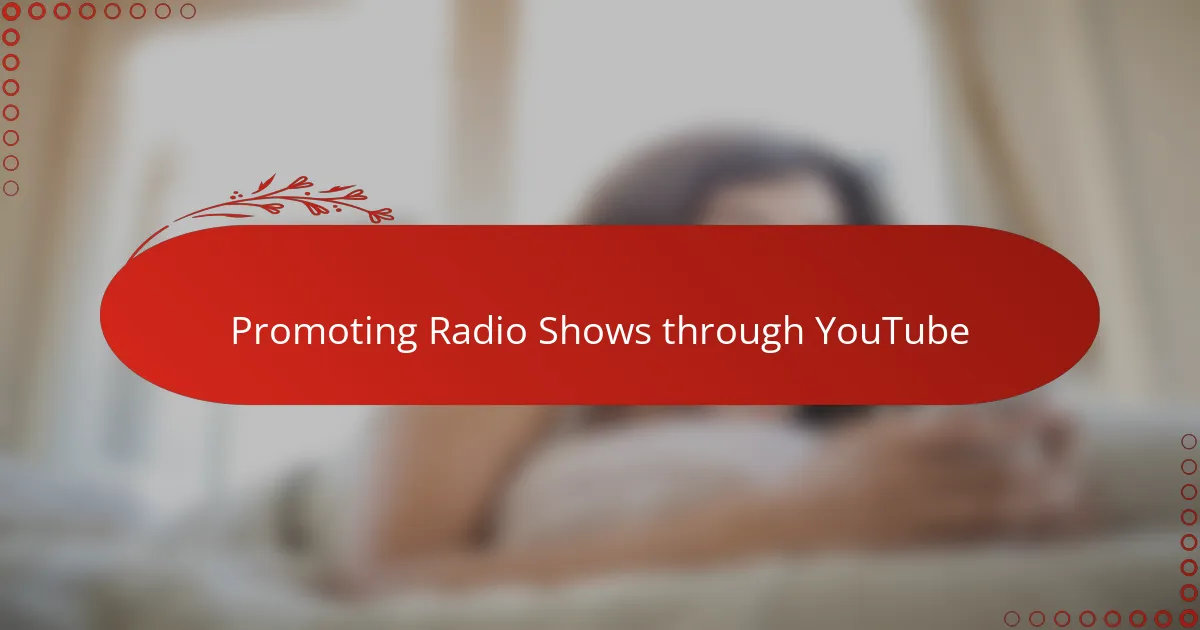
Promoting Radio Shows through YouTube
Promoting radio shows through YouTube felt like opening a whole new door to my audience. I started posting highlight clips and behind-the-scenes moments, and it amazed me how quickly people began commenting and sharing their thoughts. Have you ever wondered how a short video snippet can pull listeners into the heart of a show, making them feel like insiders rather than distant audiences?
What really struck me was how YouTube’s algorithm helped introduce my radio content to people who had never even heard the station before. Suddenly, my show wasn’t limited by geography or airtime—it was accessible anytime, anywhere. This unexpected expansion made me rethink traditional promotion tactics, showing me that engaging visuals paired with great audio can create a stronger bond with listeners.
Another thing I learned was the power of consistency on YouTube. Regular uploads kept my audience coming back, and the comments section became a lively space for feedback and ideas. It’s funny—sometimes I felt like I was hosting a virtual radio lounge where listeners not only tuned in but also chatted with each other. Doesn’t that redefine what engagement really means for radio shows in the digital age?
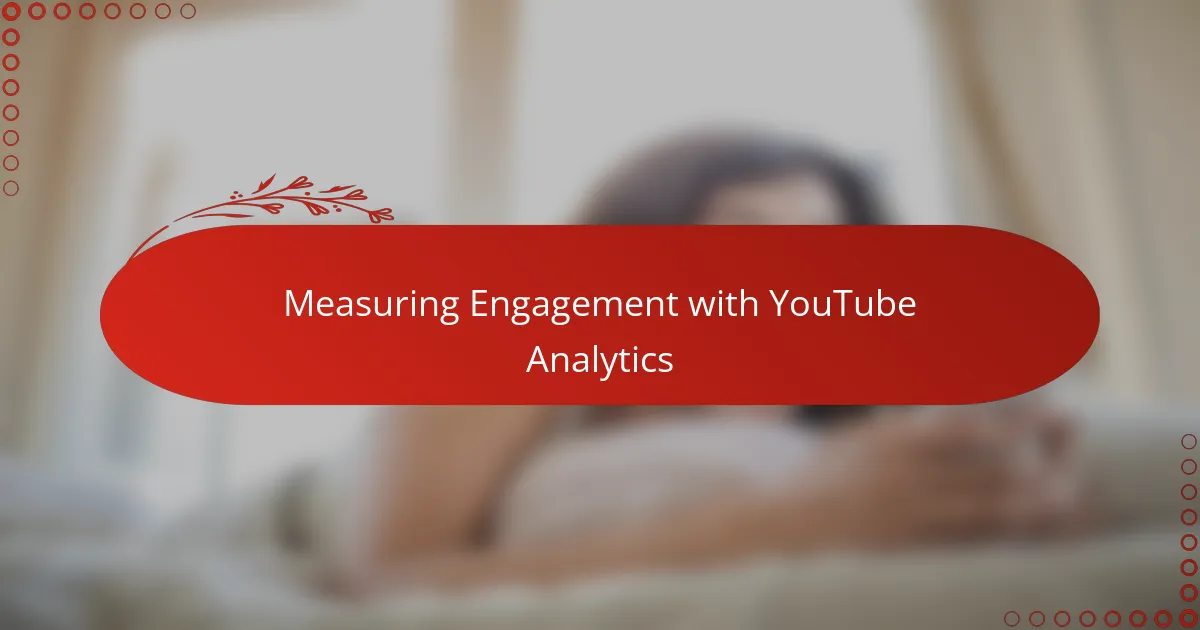
Measuring Engagement with YouTube Analytics
Diving into YouTube Analytics was a game-changer for me in understanding how my audience truly engages with my radio content. I started paying close attention to metrics like watch time and audience retention. It surprised me to see which segments kept people hooked and where viewers dropped off—insights I never had access to with traditional radio.
What really fascinated me was tracking comments and shares through the analytics dashboard. These numbers weren’t just stats; they told me how my listeners felt, what resonated with them, and when they were inspired to interact. Have you ever noticed how a spike in engagement can reveal more about your audience than any survey ever could?
I also found the real-time data incredibly valuable during live broadcasts. Watching viewer count fluctuate and seeing heat maps of engagement moments made me feel connected with my audience in a new way. It was like having an immediate pulse on their reactions—something I wish radio had offered back in the day.
